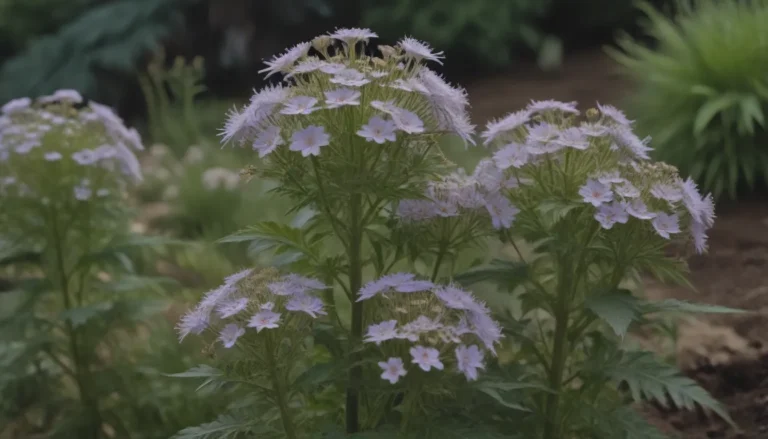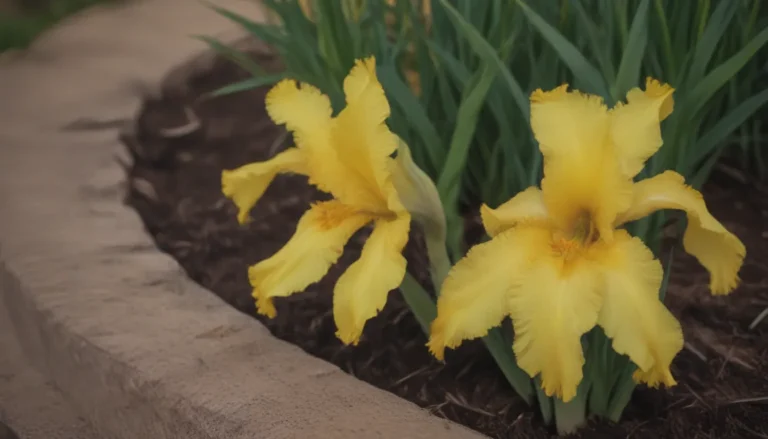A Comprehensive Guide on Growing and Caring for Stock Flowers

Are you looking to add a touch of old-world charm to your garden? Look no further than stock flowers! These beautiful cottage garden plants come in a variety of colors and boast a delicate fragrance that evokes memories of heirloom flowers. In fact, Thomas Jefferson himself imported them to plant in his gardens at Monticello back in 1771, introducing them to cultivation in the United States. Stock flowers, also known simply as stock, have since been widely cultivated and hybridized to offer a stunning array of colors, from soft pastels to vibrant shades of crimson and purple. With their narrow, oval leaves and spiky stems adorned with tightly clustered or loosely spaced blooms, stock flowers are a delightful addition to any garden.
Stock Flower Care Guide
Taking care of your stock flowers is essential to ensure they thrive and bloom to their full potential. Here are the main care requirements you should keep in mind:
Light
Stock flowers thrive in full sun, but they can also do well in partial shade with at least 2-3 hours of sunlight daily. Morning sun is preferable to afternoon sun, as too much bright sunlight can overwhelm these delicate blooms. Indirect sunlight can also help keep stock flowers blooming beautifully.
Soil
Ensure your stock flowers are planted in rich, well-drained soil with a pH close to neutral. If your soil is acidic, you can add lime or wood ash to sweeten it. For container-grown stock flowers, consider using a commercial potting soil to provide the ideal growing environment.
Water
Water your stock flowers regularly, especially during the hot summer months. However, be cautious not to overwater, as this can lead to yellowing leaves. Maintaining proper soil moisture is key to keeping your stock flowers healthy and vibrant.
Temperature and Humidity
Stock flowers prefer cooler weather and may pause blooming when temperatures rise above 65 degrees Fahrenheit. They are also sensitive to extreme humidity, so ensure they are not exposed to consistently moist, tropical conditions. Keeping them in a cool, well-ventilated environment will help them thrive.
Fertilizer
While stock flowers do not generally require fertilizer, ensuring they are planted in nutrient-rich soil is crucial. Natural mulch can help maintain soil moisture and prevent weed growth, creating an optimal growing environment for your stock flowers.
Types of Stock Flowers
Stock flowers belong to the Matthiola incana species and are part of the brassica family. With their blue-green leaves resembling tiny cabbage leaves, these flowers offer a unique aesthetic in the garden. Over the years, hybridizing efforts have led to the development of numerous Matthiola species, offering a wide range of colors to choose from. Some popular stock flower varieties include:
- Cinderella
- Legacy
- Starlight Scentsation
- Iron
- Antique Pink
Pruning Tips
Deadheading your stock flowers after the petals wilt not only keeps your plants looking neat but may also encourage new growth and additional blooms. This practice can vary depending on the stock flower variety you are growing, so observe your plants closely to determine the best pruning approach.
Growing Stock Flowers From Seed
Stock flowers are easily grown from seed, but it is advisable to sow them early to avoid wilting in late summer heat. Here’s a simple guide on growing stock flowers from seed:
- Start by preparing your soil and ensuring it is well-drained.
- Plant the stock flower seeds at the appropriate depth, following the instructions on the seed packet.
- Water the seeds gently to keep the soil evenly moist.
- Monitor the seedlings’ growth and provide necessary care as they develop into beautiful stock flowers.
Common Pests and Diseases
Stock flowers may be susceptible to pests like aphids, flea beetles, and cabbage white caterpillars. Additionally, they can fall victim to various diseases such as fusarium wilt, gray mold, leaf spot, root rot, and verticillium wilt. Preventing these issues involves proper care and maintenance of your stock flowers, including avoiding overwatering and promoting good air circulation.
Tips for Encouraging Stock Flowers to Bloom
- Stock flowers typically bloom in the spring and summer months, with potential for fall blooms in cooler weather.
- Deadhead spent blooms to promote new growth and flowering.
- Avoid exposing stock flowers to hot summer temperatures, as this can inhibit new flower growth.
Common Problems and Solutions
While stock flowers are generally easy to grow, certain conditions can lead to viral and fungal diseases. Here are some common problems you may encounter and how to address them:
- Gray Mold: Improve air circulation and avoid humid, cool conditions to prevent gray mold.
- Yellowing Leaves: Provide better air circulation and avoid overwatering to prevent yellowing leaves and downy mildew.
- Brown Spots: Space out plants, use drip irrigation, and remove diseased plants to combat leaf spot.
- Wilting Plants: Improve air circulation, avoid overwatering, and ensure proper soil drainage to prevent root rot.
Fun Facts and Additional Information
- In USDA zones 7-10, stock flowers tend to behave as biennials or short-lived perennials, returning year after year with sturdier stems.
- Stock flowers were popular during the Victorian era and were affectionately known as gilly flowers in England.
- Stock flowers are not just beautiful garden additions; they are also edible, with a delicate floral taste that can enhance salads and desserts.
By following these guidelines and caring for your stock flowers with attention to detail, you can enjoy a bountiful display of colorful blooms and a fragrant garden that will delight both you and any visitors. Remember to plant stock flowers alongside other cottage garden favorites like dianthus, heliotrope, larkspur, snapdragons, and petunias to create a harmonious garden oasis. So, get ready to cultivate your own little piece of history with these charming stock flowers!
Source: Scoble, Gretchen and Field, Ann. The Meaning of Flowers, Myth, Language & Lore. Chronical Books 1998. ISBN 978-0-8118-1931-2





